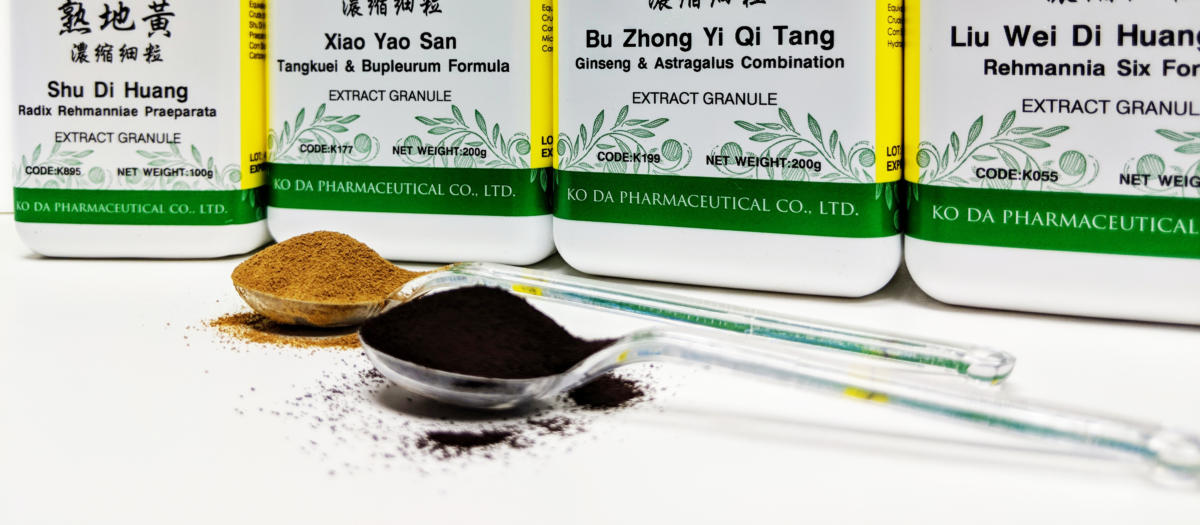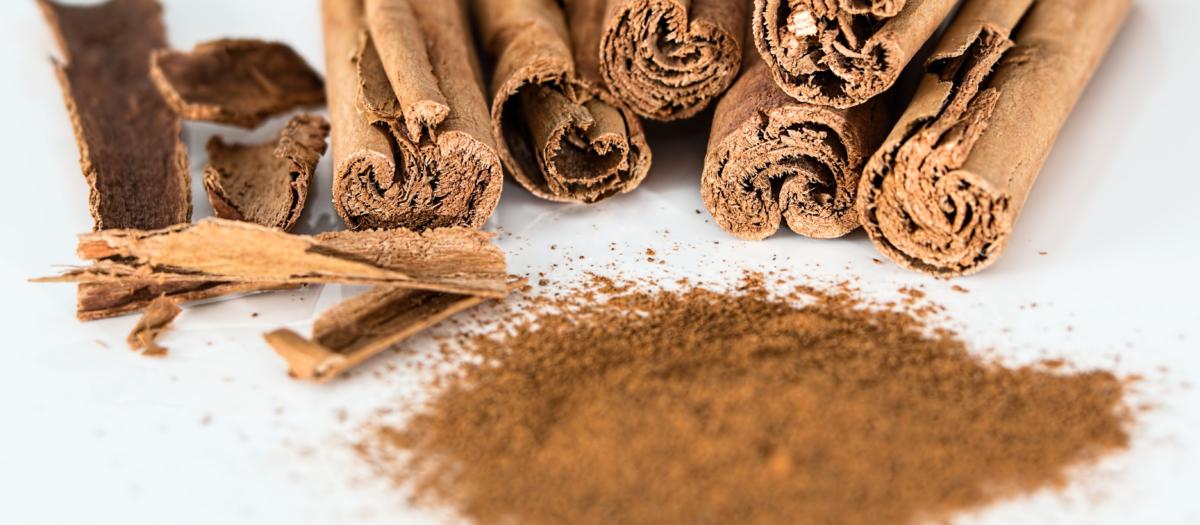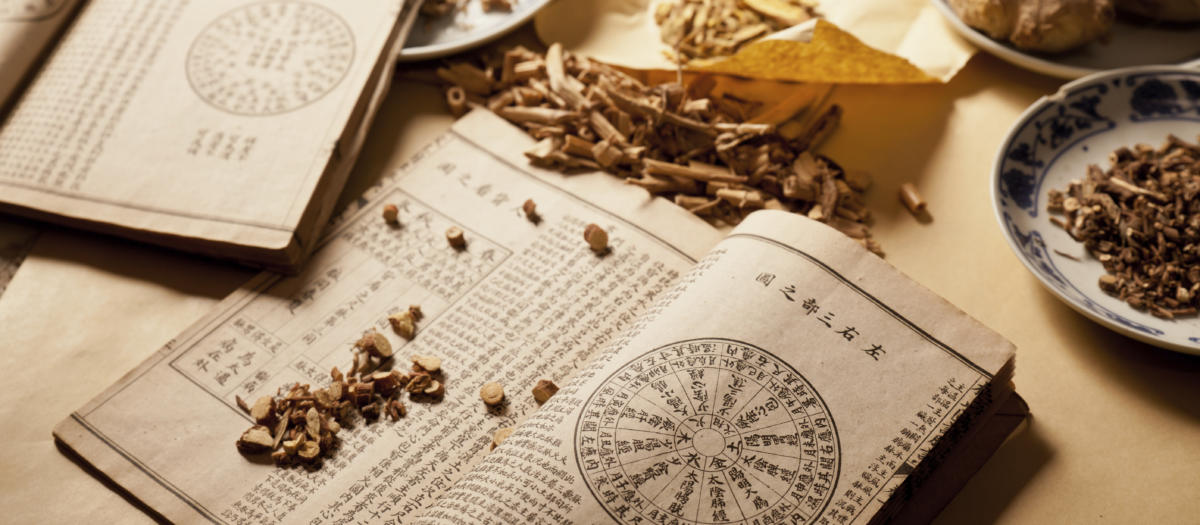“I have been practicing Chinese Medicine for 30 years and have had dealings with many companies who supply Chinese herbs – Yes Chinaherb is by far the friendliest and most efficient company that I have ever had the pleasure of dealing with and their products are of top quality – Thanks Yes Chinaherb for the friendly reliable service – I can thoroughly recommend this company to all practitioners of Chinese Medicine who require Fast efficient service and the best quality Chinese herb formulas and singles.” – W.S., Gold Coast via Facebook
“Very happy to be a customer for the past 6+ years…”
“Both the product and customer service deserve their 5 star rating. Lydia and Kenneth could not be more helpful or available. I’ve had several helpful chats with both, and have never been left hanging with unanswered questions. The KO DA herbs behave well in our Queensland environment. My clinic is left unattended and without air conditioning over Sunday and Monday, and we have never had issues with granules in opened bottles cloying. The quality in terms of taste and smell, is also excellent. Very happy to be a customer for the past 6 years or so. Well done to everyone involved in the running of the business.” – J.T., QLD via Facebook
Pesticides and KO DA Pharmaceutical
BY Yes Chinaherb, 1 JANUARY 2015
KO DA Pharmaceutical have been concerned over pesticides found in Chinese herbs since many years ago, even before Greenpeace. We prioritise safety first above all else; as the most trusted brand in Taiwan, KO DA is the only manufacturer who are able to provide full transparency of our manufacturing and quality control processes from start to finish. In Taiwan, KO DA is the first company to establish their Herbal Sourcing Project and also award-winning Cloud Herbal Tracing Platform via QR Code which details the agricultural base, planting methods, harvesting, safety inspections, testing methodologies and test results. This allows complete transparency and to give users the full picture on safety, reliability and ethical conduct of KO DA’s processes.
- When sourcing raw materials, KO DA implements a very strict Source Management system (Herbal Sourcing Project) where the agricultural environments in China are carefully assessed and formal contracts are enforced with farmers after the assessments. The contracted farmers are required to create detailed production records in accordance to Good Agricultural Practice (GAP). Additional requirements are to inspect and record water and soil conditions before and after harvest, confirm origin of herb by testing samples of species and its properties, and adhere to all other planting specifications required by KO DA.
- At the start of production, the raw materials that qualify are thoroughly soaked, rinsed and cleaned for each and every batch of production and manufactured in Good Manufacturing Practice (GMP) certified and ISO 9001:2008 certified fully automated facilities which prevents any possibility of contamination or human discrepancy. KO DA also utilises professional Clean-In-Place (CIP) cleaning systems to rinse the internal part of machines and pipes without contamination by human hands or other external factors. This ensures that KO DA’s manufacturing equipment is always kept clean, aseptic and safe.
- The purchased raw materials, semi-finished products to finished products are also consistently and heavily screened for pesticides using the most advanced testing equipment such as Gas Chromatography-Mass Spectrometry-Mass Spectrometry (GC-MS/MS) and Liquid Chromatography–Mass Spectrometry-Mass Spectrometry (LC-MS/MS). In addition to pesticides, KO DA invests in Thin Layer Chromatography (TLC), Coupled Plasma-Optical Emission Spectrometer (ICP-OES) for various heavy metals, High Performance Liquid Chromatography with Postcolumn Fluorescenc (HPLC-FL) for Aflaxotins, and LC-MS/MS again for Aristolochic Acid. All testing are conducted by KO DA’s onsite laboratory which is both Taiwan Accreditation Foundation (TAF) ISO 17025:2005 certified AND certified by Taiwan Food and Drug Administration (TFDA).
- And of course, each and every batch of KO DA’s finished product is again tested and accompanied with the Certificate of Analysis (COA) that accurately reflects test results to the nearest parts-per-million (ppm).
-
KO DA Pharmaceutical also seeks independent and reputable third party laboratories to ensure that their own testing standards remain accurate, relevant and up-to-date. We have a selection of herbal products that have passed 252 pesticide items too, such as Bai He, Gou Qi Zi, Qian Shi and Yi Yi Ren which are herbs that are most likely to be contaminated with pesticides based on studies and experience.
All of the information published on this website is intended for registered practitioners within Australia and New Zealand, and is of a general nature only. It does not take your specific needs or individual circumstances into consideration. You must make your own personal and professional assessment before making any decisions, conclusions, and/or applying any therapeutic treatments on yourself and all others involved. Yes Chinaherb Pty Ltd ABN 11 117 331 549.
Reflections of a Newbie Practitioner
by KAIKIT WONG, 18 February 2015
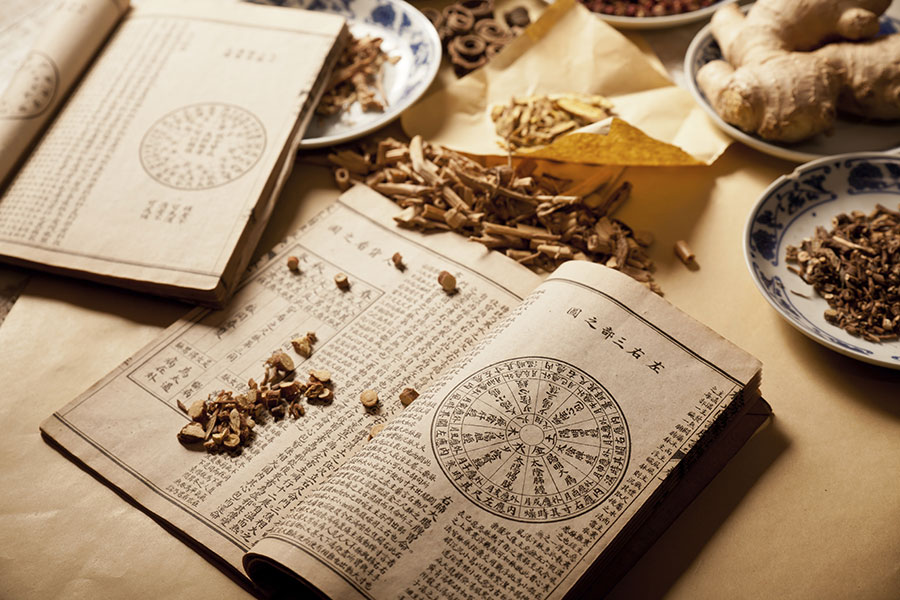
I am a fairly new practitioner with only two years of practice. I do not have deep extensive knowledge and experience to boast of. I merely have some newbie lessons that I have learnt in my short stint.
It is always said that the real learning begins after one leaves school. Even though I had confidence, yet I was scared at the same time. I was not sure if my knowledge and skills could really benefit people. Only driven by my passion to help, I decided that my knowledge and skills can only be deepened and sharpened by plunging myself into the deep waters.
My patients became my best teachers. I am grateful to them who entrust their health in my hands. Baring their wrists at each consultation allowing me to read the story of their body (and sometimes of their minds), they demonstrate time and again faith and courage as they walk their journey to better health. We cry and laugh together, and we both learn through every failure and success.
It is OK not to know the answer, but it is not OK to not treat a patient with heart. It is always better to acknowledge the limits of my knowledge than to pretend that I know everything. Always be filled with a curiosity to wonder, to seek and to think. Patients will sense the sincerity. Even when I had to let them go in the end as it was beyond my ability at that time to help them, they appreciate the honesty. Every unsuccessful case provides a learning experience and sets the stage for greater success with the next patient who presents with a similar condition.
Be open to all schools of thought. As a student, I used to be over-attached to a certain classic, or a particular style of acupuncture, or one ancient physician. Perhaps it felt fashionable at that time. I was quickly handicapped when patients kept appearing with conditions that challenged what I knew. Only when I started adopting other schools/methods did I find a treatment for these patients.
Have a sufficient understanding of western medicine to converse with patients (and medical doctors if necessary). By using their language, it may help them to understand the ancient wisdom of Chinese medicine, and perhaps bridge the gap one day. It is not about assimilation but rather of co-existence. It is my earnest wish that Chinese medicine be widely accepted into mainstream medicine one day.
Kaikit Wong is one of the directors of Ren Acupuncture and Herbal Medicine in Randwick, New South Wales. She has a special interest in women’s health and dermatology because of its challenges, hope and joy brought to her patients and herself. She is passionate about using the ancient wisdom of Chinese medicine to help her patients live better and healthier lives.
All of the information published on this website is intended for registered practitioners within Australia and New Zealand, and is of a general nature only. It does not take your specific needs or individual circumstances into consideration. You must make your own personal and professional assessment before making any decisions, conclusions, and/or applying any therapeutic treatments on yourself and all others involved. Yes Chinaherb Pty Ltd ABN 11 117 331 549.
Treating Constipation
TREATING CONSTIPATION
By DR BRUCE STAFFORD
29 November 2019
by DR BRUCE STAFFORD, 29 November 2019
A lot of patients present with constipation. Although not necessarily their primary complaint, moving their bowels will often help in their overall treatment. Moving bowels is usually easy enough in the short-term, but long-term use of bowel-moving herbs can make the bowel lazy and create a dependency.
I find that using herbs to retrain bowel movements in the short-term followed by teaching the patient long-term strategies to keep them moving without herbs is the best approach.
Clinically, I mainly see three pattern types:
- Dry-type – high pulses (Yin deficient), thin people. For these patients you must moisten the bowel to get the stool to move using Mai Zi Ren Wan plus additional Huo Ma Ren and Xing Ren as required.
- Wet-type – deep, spongy pulses in the guans (Damp/Damp-Heat). For these patients you must use bowel moving herbs that clear Damp. Yin Chen Hao Tang is ideal plus additional Da Huang and Mang Xiao as required (depending on the amount of Damp-Heat present). If the Stomach is weak then protect it using a warming formula or herbs. Note: if the patient’s blood pressure is high, they can handle Yin Chen Hao Tang or Da Huang at higher doses.
- Weak-type – weak pulses reflecting deficiency and a weak peristaltic action in the bowel. For these patients you must also tonics to move the bowel – Huang Qi and Dang Shen to boost peristalsis. Also add bowel movers like Huo Ma Ren, Xing Ren and Mang Xiao as required.
Note: if the pulses are really tight/wiry (the patient has a lot of stagnation/tension) you may also need to add herbs such as Chai Hu or a Chai Hu related formula to relieve constraint.
Long-term, I give the patient strategies to better manage their constipation on their own. This includes:
- Having them eat stewed apple each day (green apples are best). The fructose attracts water to their bowel to aid the passage of stool. If this doesn’t work then get them to add stewed rhubarb (to replace Da Huang).
- Introducing psyllium husk into their diet every day.
- Massaging their own abdomen in a clockwise direction for 1 minute in the morning and again at night.
As a last resort they could drink senna tea – powder is better than tea leaves if they can get it.
Dr Bruce Stafford (Chinese Medicine)
Emperor’s Acupuncture
All of the information published on this website is intended for registered practitioners within Australia and New Zealand, and is of a general nature only. It does not take your specific needs or individual circumstances into consideration. You must make your own personal and professional assessment before making any decisions, conclusions, and/or applying any therapeutic treatments on yourself and all others involved. Yes Chinaherb Pty Ltd ABN 11 117 331 549.
“…a very service orientated company”
“I have been ordering from Yes Chinaherb now for some time and they are a very service orientated company – my orders to Adelaide are the quickest of any supplier that I have dealt with!”- N.D, Adelaide
“…see quicker results in practice.”
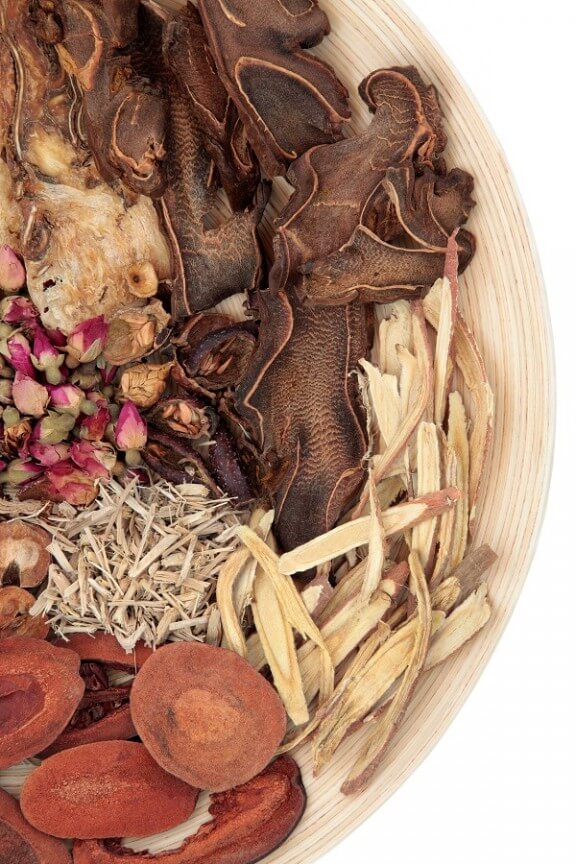
“Best service, love Yes Chinaherb been using them for years both in NSW and VIC. And also NZ (Materia Medica). KO DA is a fantastic brand to use. It provides me with complete confidence prescribing herbs with patients. I can assure them that the herbs I give them are tested for heavy metals, toxins and are medical-grade. I also see quicker results in practice.” – I.S., Melbourne via Facebook
Chinese Herbal Medicine for Amenorrhea
Author: Ilana Sowter, 17 December 2019
Amenorrhoea is a medical term when a woman ceases menstruation (Klein & Poth, 2013). Medically it is classified into two types: primary and secondary. Primary Amenorrhoea refers to a woman who has not started the menstruation by the age of 16. Secondary amenorrhoea refers to the abnormal stopping of the menstrual cycle for more than 3-6 months, when previously the cycle was regular (Maciocia, 2011).
Amenorrhoea Radio Talk
Listen to Ilana Sowter & Heiko Lade discuss Amenorrhoea and Chinese Herbs here.
Aetiology & Pathology
Scientifically, primary amenorrhoea may be caused by genetic or anatomical reasons. Secondary Amenorrhea may be caused by too much exercises; over-stress; ovarian or hormonal disorders, thyroid to nutritional disorders (Klein & Poth, 2013). In clinic, I see many patients who have take the Oral Contraceptive Pill long-term. When they have stopped taking it, in their case, menstruation stops and the cycle has no regularity.
Bi Jing & Patterns
In Traditional Chinese Medicine (TCM), amenorrhea is referred to as Bi Jing.
It is essentially considered in the following patterns:
- Kidney Jing and Liver Blood Deficiency
- Yin Deficiency with Blood Dryness
- Qi and Blood Deficiency
- Qi and. Blood Stagnation
- Phlegm and Dampness Obstruction (Maciocia, 2018; Tan et al., 2007).
Some experts also consider congealing Cold pattern and Spleen deficiency pattern as a cause (Lei & Cohen, 2014; Si-Tu & Wang, 2007). Amenorrhoea is a blood disease which is related to the heart, spleen, liver and kidney.
In the Jin Gui Yao Lue, Zhang Zhongjing affirms “women’s diseases which are due to emptiness, accumulated coldness, or bound Qi may result in menstrual water being stop”(cited in Flaws, 2005). Amenorrhoea can be due to lack of blood or blockage of blood flow. Heart which governs the blood may fail its function because of emotional disturbance. The Heart is an important organ to consider seeing that the Bao Mai, that connects the Heart to the Uterus can be blocked.
Over working, stress, lack of or too much exercise, improper and orthorexic diets may cause the Spleen to fail its function of producing and transporting blood. Dampness or Phlegm may appear when the Spleen is too weak which may block the uterus hence no period. Kidney Jing originates from menstrual blood. Excessive sex and other exhaustive factors like over working may weaken the Kidney and consume Liver Blood; which lead to deficiency of Chong Mai and Ren Mai. The Liver has the function of storing blood which also supply the blood to the uterus coordinating with the Ren Mai.
Excess patterns are also damaging. As blood and fluids have the same resource, excessive fluid loss may lead to blood consumption. Too much dampness, phlegm or coldness accumulated in the body which is due to different factors may result in Qi stagnation and blood stasis. The blockage leads to amenorrhea (Si-Tu & Wang, 2007).
Treatment of Amenorrhoea
Before treating amenorrhoea, pregnancy should be firstly ruled out. Medical treatment is usually hormone therapy. Hormonal drugs do not always regenerate nor regulate the menstrual cycle and they come with some side effects as well (Klein & Poth, 2013). Maciocia (2011) implies that long-term use of OCP cause blood deficiency.
In TCM, Amenorrheoa is treated according to syndrome differentiation which can be divided into excess or deficiency patterns (Tan et al., 2007.; Maciocia & Kapthcuk, 2011).
Excess Patterns
The amenorrhea is usually caused by the blockage of the channels due to excessive Damp Heat, Qi and Blood Stagnation and Congealed Cold. The treatment principle can be promoting the Qi and Blood circulation and clearing the excess for the target of regulating menstruation (Lei & Cohen, 2014).
Basic Chinese Herbal Formulae for Excess Patterns
- Xue Fu Zhu Yu Tang (severe blood stagnation)
- Tao Hong Si Wu Tang (to remove blood stasis);
- Wen Jing Tang (to warm the channels);
- Cang Fu Dao Tan Wan (to resolve damp and phlegm).
Commonly used acupoints are: ST30 Qi Chong; SP10 Xue Hai; RN3 Zhong Ji; ST40 Feng Long; SP9 Yin Ling Quan (all points with reducing or even method with moxa applicable when treating congealed cold) (Ellis, Wiseman, & Boss, 1991)
Deficiency Patterns
For deficiency patterns, the patients might have experienced late menarche and/or postponed period with small amount of blood for each period. The blood is deficient for this pattern which might because of the deficiency of kidney, liver, spleen, yin which lead to the absence of menstruation. The treatment principle for this type is to tonify blood and the deficient organs with the target of regulating menstruation (Maciocia, 2011).
Basic Chinese Herbal Formulae for Deficiency Patterns
The common herbal formula for these patterns include:
- Gui Shen Wan (to tonify kidney and liver);
- Ren Shen Yang Rong Tang;
- Ba Zhen Tang (to tonify blood and qi);
- Modified Yi Yin Jian(to nourish Yin) (Maciocia & Kapthcuk, 2011).
Commonly used acupoints are: ST36 Zu San Li; BL17 Ge Shu; BL23 Shen Shu; RN4 Guan Yuan; RN6 Qi Hai; KD6 Zhao Hai (all with reinforcing method with the combination of moxibustion) (Tan et al., 2007).
Chinese Herbal Medicine Amenorrhoea Study
In one clinic trial, a cyclic method of therapy which included four phases of treatment of amenorrhea treating 223 patients (Yan, 2001). Different herbs and treatment purposes were used for different phases with 3 months as one course of treatment. After one course of treatment, the efficacy rate was 89.47% (Yan, 2001).
Conclusion
From a Chinese medicine perspective, TCM treatment aims to adjust the body’s function and rebalance the yin and yang to help to regulate the menstruation which is to treat the root of the problem instead of the symptoms with almost no side effects (Blakeway, n.d.; Cai, 2013). I find when treating amenorrhoea, the correct Differential Diagnosis and Chinese Herbal Formula can have a profound effect on the patient. Acupuncture is also very supportive. The patient must also follow lifestyle advice of relaxing more, exercising in balance, eating nourishing blood foods, and even meditation and basic supplements can support her to menstruate again. Many women seek treatment as they have come off the pill ready to conceive a baby, or are concerned that their lack of menstruation is harming their health.
References
Blakeway, J. (n.d.). Chinese Medicine Treats Amenorrhea. Retrieved April 28, 2019, from https://www.yinovacenter.com/blog/how-chinese-medicine-treats-amenorrhea/
Cai, C. (2013). Acupuncture and Moxibustion Treatment of Amenorrhea. Medical Acupuncture, 25(3), 205–208. https://doi.org/10.1089/acu.2012.0914
Ellis, A., Wiseman, N., & Boss, K. (1991). Fundamentals of Chinese acupuncture. Paradigm Publications. Retrieved from https://books.google.co.nz/books?id=bKoMiuhSb3YC&pg=PA17&lpg=PA17&dq=needling+precautions+insomnia&source=bl&ots=A2Wk1_Hj6u&sig=Xo71hC-Axq_cXw9CJEcQtZ7VG8g&hl=zh-CN&sa=X&ved=2ahUKEwidnefm3a3eAhXbAYgKHYyLDgoQ6AEwA3oECAUQAQ#v=onepage&q=needling precautions
Health Navigator. (2019). Menstruation. Retrieved April 28, 2019, from https://www.healthnavigator.org.nz/health-a-z/m/menstruation/
Jedel, E., Labrie, F., Odén, A., Holm, G., Nilsson, L., Janson, P. O., … Stener-Victorin, E. (2011). Impact of electro-acupuncture and physical exercise on hyperandrogenism and oligo/amenorrhea in women with polycystic ovary syndrome: a randomized controlled trial. American Journal of Physiology-Endocrinology and Metabolism, 300(1), E37–E45. https://doi.org/10.1152/ajpendo.00495.2010
Klein, D. A., & Poth, M. A. (2013). Amenorrhea: An Approach to Diagnosis and Management(Vol. 87). Retrieved from www.aafp.org/afpAmericanFamilyPhysician
Lei, L., & Cohen, M. R. (2014). TCM case studies. Gynecology. People’s Medical Publishing House. Retrieved from http://203.118.138.176:2000/#!resources/searchresult
Lu, P. (2000). Treatment in 32 Cases of Amenorrhea with Acupuncture Using SP6. Journal of Clinical Acupuncture and Moxibustion, 16(6), 44.
Maciocia, G. (2018). Diagnosis in Chinese medicine : a comprehensive guide.
Maciocia, G., & Kapthcuk, T. J. (2011). Obstetrics and gynecology in Chinese medicine. Elsevier.
Si-Tu, Y., & Wang, X. (2007). Menstrual disorders I : dysfunctional uterine bleeding & amenorrhea. People’s Medical Publishing House. Retrieved from http://203.118.138.176:2000/#!resources/searchresult
Tan, Y., Qi, C., Zhang, Q., Xiao, P., Ma, H. (2007). Zhong yi fu ke xue. Ren min wei sheng chu ban she. Retrieved from http://203.118.138.176:2000/#!resources/searchresult
Yan, W. (2001). Treatment in 223 Cases of Amenorrhea According to Staged Pattern Differentiation. Zhejian Journal of Traditional Chinese Medicine, 8(344).
All of the information published on this website is intended for registered practitioners within Australia and New Zealand, and is of a general nature only. It does not take your specific needs or individual circumstances into consideration. You must make your own personal and professional assessment before making any decisions, conclusions, and/or applying any therapeutic treatments on yourself and all others involved.
Yes Chinaherb Pty Ltd ABN 11 117 331 549.

